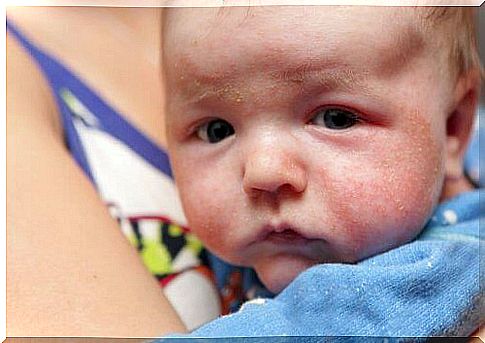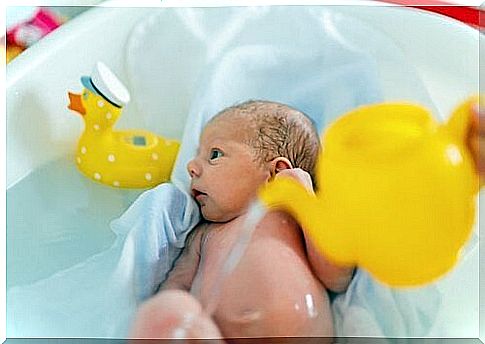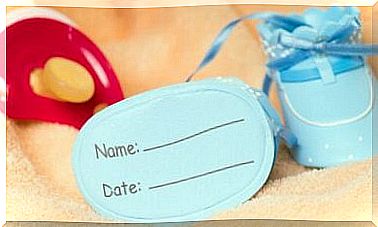What Causes Flaky Skin In Newborns?

The skin of a newborn is extremely sensitive and will continue to change appearance during the first weeks of life. For example, the skin may start to flake off a bit, which is nothing to worry about. It’s normal. But if you are wondering what causes flaky skin in newborns – keep reading!
Flakes or scales on the newborn’s skin can appear anywhere on the body. But the most common is that it occurs on the hands, soles of the feet and ankles. The reason for this is that the baby loses the outermost layer of skin during the first two or three weeks after birth.
The amount of flakes that appear on the skin can also vary. This often depends on whether the baby is born prematurely. In other cases, the flakes may be a symptom of a condition that requires treatment.
However, a certain degree of dryness after birth is completely normal and usually goes away on its own. In general, therefore, no form of special treatment is required.
Causes of flaky skin in newborns
If your baby’s skin appears very dry or starts to flake in the weeks after birth, it can be reassuring to know what is causing it. Examples can be:
1. Iktyos
A type of hereditary disease called ichthyosis can cause dandruff and dryness. The condition also causes flaking, itching and skin loosening.
Your pediatrician can diagnose your baby with this condition based on your family’s medical history and after performing a physical examination. Your doctor may also need to take blood or tissue samples from your skin.
There is no cure for ichthyosis, but if you apply it regularly with creams, the dryness decreases and the condition of the skin improves.
2. Eczema
In some cases, flaky and dry skin is caused by eczema, or atopic dermatitis. Eczema can cause dry, red and itchy spots on the baby’s skin.

This condition usually does not occur immediately after birth, but can develop later in childhood. The exact cause is unknown, but researchers believe that several factors may trigger an outbreak, such as being exposed to chemicals from shampoos or detergents.
Tips to reduce flaky skin in newborns
If your little one seems to feel uncomfortable with all their flaky skin, it is important to try to soothe it. Here are some tips to help you reduce flaky skin in newborns:
Hot baths – not hot
Hot water dries out the skin of people of all ages, including newborns. Therefore, you should avoid using hot water if your little one has flaky skin.
Bathing in warm water is best for the newborn baby’s sensitive skin. Also, always follow the special recommendations for infant hygiene.
2. Use baby soap
To treat and prevent flaky skin, use a soap that is specially made for babies. The soap you use yourself is probably too tough on the baby’s sensitive skin.
3. Use a humidifier
A humidifier adds moisture to the indoor air, which helps to treat and prevent flaky skin.
Simply set the humidifier in the room where the baby spends most of his time. Let it run for a few hours whenever the air feels a little dry.
4. Limit the time in the bath
Bathing can have an adverse effect on a baby’s skin. If you bathe your baby for too long, it can wash away the natural oils in the baby’s skin, and the skin then has a tendency to flake more. Therefore, you should reduce the time your baby is in the bath.

5. Maintain fluid balance
It is important that your baby does not become dehydrated. Therefore, be sure to follow the established routine for breastfeeding or milk replacement. If the baby ingests food and fluids properly, it helps to moisturize the skin.
Finally, remember that the appearance of flaky skin on a newborn baby is normal. Do not worry too much. And with the above information, you also know why it happens and how you can alleviate it.









